Sleeping Dogs (1977)
Directed by: Roger Donaldson
Written by: Arthur Baysting, Christian K. Stead, Ian Mune
Starring: Ian Mune, Nevan Rowe, Sam Neill, Warren Oates
New Zealand
AVAILABLE ON BLU-RAY AND DVD: NOW, from ARROW ACADEMY
RUNNING TIME: 112 mins
REVIEWED BY: Dr Lenera, Official HCF Critic
After learning that his wife Gloria has started seeing another man, Smith gets up one day and leaves her, his two daughters and his home, and decides to live on Gut Island, an uninhabited island off the Coromandel Peninsula owned by a Maori tribe. At the same time, political tension in New Zealand escalates as an oil embargo leaves the country in an energy crisis and Prime Minister Vorster uses the resulting civil unrest to create its own terror incidents to gain popular support for his repressive policies. Smith is content with his peaceful life until a bomb explodes in a nearby town and and police arrive on his island. After they find a cache of explosives that Smith had been unaware of, plus a gun and a military radio he came across, he’s arrested as a subversive and taken to a police station….
It’s often nicer when you’re given a film to review that you’ve never heard of then one you know a bit about, and so it was the case with Sleeping Dogs, New Zealand cinema being sadly something that I’m not very knowlegeeable about aside from being aware of Taiki Waitiki and being a fan of Vincent Ward and, up to the Hobbit films, Peter Jackson. Sleeping Dogs was actually the debut feature from Roger Donaldson who went on to have a solid career in Hollywood with titles like Species and Dante’s Peak to his name, and here he was able to craft a good political thriller on what was a very low budget. It was made in 1977, but in terms of its political commentary it could have been made ten years later or even fourty years later, so timely is its depiction of an extreme right wing government using crises to unleash harsh, unfair policies and getting widespread public support for doing so. As a piece of exciting cinema it does slacken in places, sometimes lacking the urgency it should have from its hero being constantly on the run and nowhere feeling safe, but it’s still continually engrossing, stunningly photographed so it sometimes looks far more expensive than it is, and features a highly energetic and impassioned early performance from Sam Neil in which his charisma is already highly apparent.
It was adapted by screenwriters Ian Mune and Arthur Baysting from a 1971 novel called Smith’s Dream by Christian K. Stead in which the author was inspired by his involvement in the anti-Vietnam War protest movement. Producers Larry Parr and Donaldson had difficulty raising the finance for it and eventually somehow got the Arts Council to underwrite several merchant banks. He originally wanted Jack Nicholson for the role that Warren Oates played, but the former’s agent turned down the role when informed of the low budget. However, he also recommended Oates, who often got second billing despite only being in the film for about 20 minutes. Shooting was sometimes done on the sly: the scene in which Smith escapes the police van and runs off into the crowded street was filmed without formal permission from the police, resulting in Neill’s stunt double being tackled by an off-duty police officer who mistook him for a real criminal attempting to escape custody. Existing locations tended to be used with little altering and nothing was done on a set at all. Just before release, New Zealand’s then-Prime Minister Robert Muldoon requested a private screening after hearing rumours that the film was intended as a criticism of his leadership. The first feature-length Kiwi film shot on 35 mm film stock, its huge domestic success was a major factor in convincing New Zealand politicians that a Film Commission financed with public funds should be established. It was also the first film from that country to get a general release in the USA. Four years later, New Zealand experienced the horrors and scarring of civil division when the then-internationally-banned Springbok rugby team from South Africa were allowed to tour, resulting in scenes just like some of the ones Donaldson has shot.
Our reluctant hero ‘Smith’ just wants to get away from it all. We first see him leave his crying wife Gloria and two daughters, and not be bothered whatsoever by his car being blocked in by another – he just bashes the other car out of the way with his own vehicle and drives off. It’s only a few scenes later when we learn that we’ve been slightly misdirected. Smith has done this because Gloria got together with another man Bullen, the latter presumably being the owner of that car. Whilst driving along, he espies the remote island of his dreams, and cinematographer Michael Seresin gives us some gorgeous sunset shots here, showing it as the dream hideaway that Smith seems to need. It even contains a house that seems like a remarkable coincidence, but never mind. He’s immediately at home there with just a dog someone gives him and occasional encounters with a local fisherman for company. I guess some may find the pace overly slow here, but I feel that it was necessary to get a sense of the life that Smith wants, and the way that certain bits of information in the first part of the film are withheld is nicely done without becoming confusing. The political situation is worsening and Mullen and Gloria are bloodily caught up in a brutal police assault on demonstraters. Prime Minister Vorster seems honest and even rather nice on TV, saying that his drastic measures are essential to keep the collapsing country in order, but we know that he’s causing most of the problems when we see a shady government man pay someone to do some killing. I’m sure that you don’t have to be a conspiracy nut to find all this scarily believable.
Smith is framed, arrested and interrogated by old school mate Jesperson, and another example of the film’s great photography is the way in which Jesperson is lit to look as absolutely sinister as possible without it looking overly obvious. Smith has to confess to being a revolutionary or be tried and shot, so no wonder that he opts to escape, something that he does with ridiculous ease. He’s now on the run, but manages to work at a hotel and shack up with local girl Mary until a US army unit arrives and takes over, American military advisers having been invited over by Vorster to sort out the mess, something that they of course are experienced at doing – or should be trying to do? Despite the obvious political commentary, it’s here that things stall a bit, and Oates’s role as their commander Willoughby, in truth, didn’t really need to be in the film at all even though Oates seems to be having fun and his character is nicely sketched out. One can’t really say the latter for Mary, or indeed Gloria who’s written as a frankly unsympathetic tart who seems to have no shame cheating and flitting back and forth from two blokes. Smith is great though, one of the cinema’s best examples of a person who doesn’t want anything to do with what’s going on around him but, like the protagonists of many of those politically inclined spaghetti westerns, is – little by little – roped into action. It’s largely due to Bullen who’s a full blown revolutionary, though Smith really does resist for as long as possible, even after he’s shot a few people. The final scenes do have an edge of seat quality to them and the ending – well, I won’t reveal it – but it manages to be both a triumph and a defeat, if that makes sense. You’ll see what I mean.
The riot footage looks very realistic and employs what must have been a fairly small number of extras in a creative way to give the impression of lots of people. Otherwise, action is generally brief and to the point, though a car dash manages to be genuinely hair-raising, maybe partly because such sequences in old movies seem more and more exciting as time goes by because if you watch a comparable scene from a new film you just know that computer graphics are probably being employed. Elsewhere Donaldson shows himself to be great at ecomonically depicting things, such as a love scene simply shown by one hand on top of another and caressing it, a moment which contrasts with the awkwardness of a drunken tryst earlier, albeit one that has a certain sexy intimacy to it, Neill and Donna Akersten both seeming very comfortable with each other. Donaldson and Seresin find some room for some unusual angles and character positioning, something Donaldson sometimes did subsequently in his films. I especially liked the beginning where four characters take up a hallway on the left hand side of the screen while the right hand side is dominated by the stairs. Shots are often lingered on more than most American films of the time [and nearly all American films of today] would do. You could easily tighten up this movie without weakening the narrative, but I still rather like it the way it is.
Neill’s performance is genuinely visceral and gets strong support from Ian Mune who does a good job of getting you to warm to Bullen ,a person you should be rights hate. The music score is credited to three composers- Mathew Brown, David Calder and Murray Grindlay- and indeed it does often seem to largely consist of two very different sounding pieces and unusual musical sounds. The Lalo Schifrin-esque music you here sometimes seems a bit too upbeat for the generally downbeat material, though a few country and western-tinged songs and instrumental variations feel somehow appropriate. Despite being perhaps a little naive and not quite hanging together properly, Sleeping Dogs still packs quite a punch and remains rather pertinent in these times of governments able to manipulate the media and influence people to think a certain way in far more devious means that in 1977 – yet it’s also a good example of how political cinema can be loud and clear about what it’s trying to say yet also be a good piece of entertainment and not resort to preaching.
Rating: 7.5/10]
Sleeping Dogs gets a very film-like digital transfer for its Blu-ray release. There are a few minor colour and brightness variations no doubt due to the film’s age, but nothing that’s distracting. There’s just the right amount of grain and some of the outdoor sequences boast a very high amount of detail.
Arrow have ported over the audio commentary and making of documentary from the 2004 Anchor Bay DVD and added another featurette they unearthed. The commentary with Donaldson, Neill and Bune is light hearted right from the beginning, but don’t let that fool you – there’s a hell of a lot of information delivered here, from the pointing out of locations to how the project got started [it was all because a minor cast member invited Donaldson and Bune, who’d hadn’t met, for dinner] to recollections bout the shooting of various scenes – along with some good-natured mocking of the acting of Neill and Bune. They point out when Oates is holding his script onscreen because he’s only just arrived on scene, and how Donaldson went off to shoot a advertisement when money ran out. Consistently interesting but these guys are also fun to hang out with – a very good track.
Next up is a ‘making of’ from 1977 running nearly half an hour, and it’s full of interviews and fascinating on-set footage showing how some scenes were shot. Seresin can be seen complaining how the departure of most of the locals whom they used as extras meant that he had to change a major camera set-up he’s planned. There’s quite a sense of excitement about the picture even though it hadn’t quite been released then. Arrow have provided some introductory text warning of audio issues, but it’s not too shabby really.
The hour-long 2004 documentary is fabulous. Donaldson and most of the surviving cast and crew take us through the making of the film from start to finish, often reminiscing while re-visiting locations which is just wonderful. This is inter-cut with 1977 footage, most of it taken from the shorter documentary, though there’s some material that isn’t in it. There are some great stories, such as the reason the car seems go out of control and get a tree trunk jammed into its front window [it wasn’t supposed to happen], and a hilarious elaboration of a tale only partly told in the 1977 documentary about the car getting damaged and the crew suddenly spotting a nearly identical car driving by – which somebody then had to catch up with and buy on the spot! Donaldson was apparently sometimes annoying with the way he would do everyone’s job. The overall impression is a bunch of people who didn’t really know that they were doing and didn’t really have enough money at their disposal but their huge enthusiasm enabled them to succeed in their tale. It’s quite inspiring and one of the best ‘making of’ documentaries I’ve watched in some time. In fact I’d go as far to say that it’s as worthwhile a watch as the movie.
The Doc recommends the historically significant and probably always timely Sleeping Dogs, and its superb ‘making of’ and commentary truly make this an Arrow release definitely worth purchasing.
SPECIAL EDITION DETAILS:
* Commentary by writer-director Roger Donaldson, actor Sam Neill and actor-writer Ian Mune
* The Making of Sleeping Dogs (1977), a contemporary behind-the-scenes documentary featuring interviews with Donaldson and Neill
* The Making of Sleeping Dogs (2004), a 65-minute retrospective documentary on the film’s production featuring interviews with Donaldson, Neill, Mune, Geoff Murphy
* Theatrical trailer
* Reversible sleeve featuring original and newly commissioned artwork by Sean Phillips
* FIRST PRESSING ONLY: Illustrated collector’s booklet featuring new writing on the film by Neil Mitchell, a contemporary review by Pauline Kael and the original press books


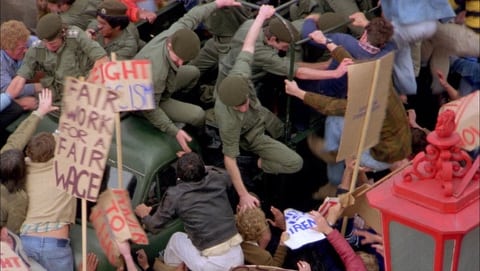
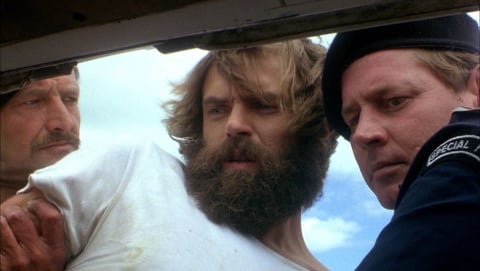

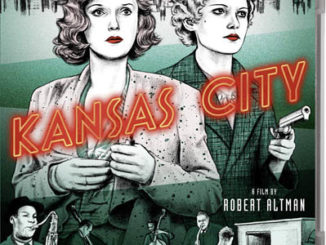
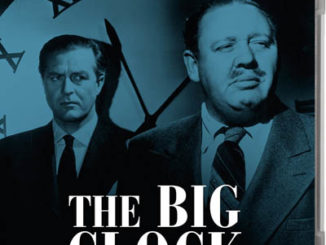
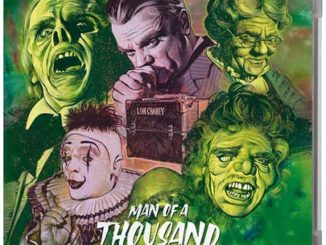
Be the first to comment